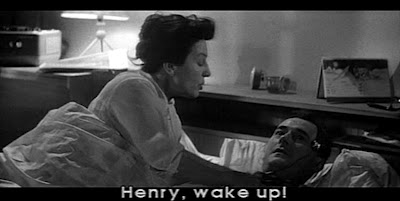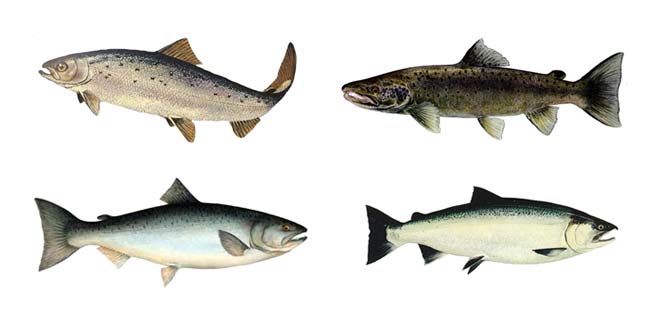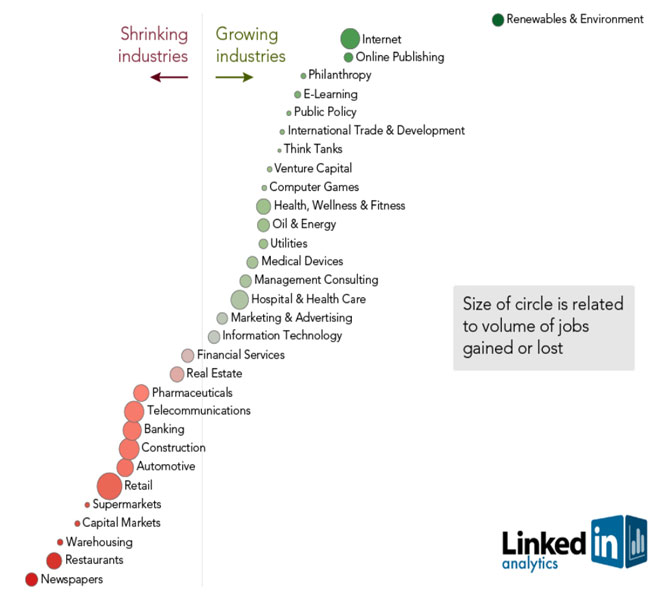
|
|
|

Previous studies identified a number of common cycling injuries, including neck and back pain, chafing, and genital numbness. In fact, 50 to 91% of men and women cyclists report experiencing genital numbness. The relationship between bicycle setup and genital sensation in women cyclists, however, has, until now, not been investigated.
In order to study this relationship, scientists (…) recruited 41 female cyclists who rode an average of at least 10 miles per week, and who positioned their handlebars lower than or level with the saddle. (…)
The Medoc Vibratory Sensory Analyzer 3000, not your average vibrator, was used to measure sensation at eight genital regions: the clitoris, the left and right perineum, the anterior and posterior vagina, the left and right labia, and the urethra.
(…)
This increase in perineum saddle pressure resulted in a significant loss of genital sensation in the anterior vagina and in the left labia, where the threshold at which women were able to sense genital stimulation increased by 34% and 29% respectively in women with lower handlebars.
{ Salamander Hours | Continue reading }
leisure, science, sex-oriented, transportation |
March 19th, 2012
Wallace had been taking Nardil for his depression since 1989. Nardil is a monoamine oxidase inhibitor, or MAOI, a member of the earliest generation of antidepressants; newer drugs are usually not only more effective against the illness but also less likely to cause collateral damage. In 2007 Wallace was a happy man, writing, married since 2004, for the first time, to the artist Karen Green, and teaching at Pomona College, one of the distinguished Claremont Colleges, where he had an endowed professorial chair that gave him pretty much free rein. After dinner at a Persian restaurant in Claremont one evening, he developed excruciating stomach pains that lasted several days. His doctor suspected a dire food interaction with Nardil, and suggested Wallace go off that outdated medication and try something newer. Wallace had already suspected for several months that Nardil was impeding the flow of The Pale King—though it evidently had not interfered with Infinite Jest—so the idea sounded promising. But then Wallace tried doing without any medication at all, and he landed in the hospital in the fall of 2007. After that he went on one drug after another but never really gave any of them the chance to be effective. Not wanting to foul his home, he tried suicide by overdose in a nearby motel, but survived. A course of twelve electroconvulsive treatments failed to work. He went back on Nardil; it did not kick in quickly enough. Not caring any more what he fouled, on September 12, 2008, he waited for his wife to leave for her gallery, wrote her a two-page note, and hanged himself on the patio of their Claremont home. He left a neat stack of manuscript pages in his garage office for his wife to find.
{ The Claremont Institute | Continue reading }
drugs, experience, ideas |
March 18th, 2012

This has led researchers to ask the questions: How can we get mobile users to break out of their patterns, visit less frequented areas, and collect the data we need?
Researchers can’t force mobile users to behave in a certain way, but researchers at Northwestern University have found that they may be able to nudge them in the right direction by using incentives that are already part of their regular mobile routine.
“We can rely on good luck to get the data that we need,” Bustamante said, “or we can ‘soft control’ users with gaming or social network incentives to drive them where we want them.”
{ McCormick School of Engineering and Applied Science | Continue reading }
related { What Privacy Advocates Don’t Get About Data Tracking on the Web }
related { Google regularly receives requests from government agencies and courts around the world to remove content from our services and hand over user data | Who Does Facebook Think You Are Searching For? | Thanks Samantha! }
horror, spy & security, technology |
March 16th, 2012

The treatment of addiction and dependence on, and misuse of, alcohol and other drugs is one of the largest unmet needs in medicine today, so the development of new treatments is a pressing need. However, we have seen the development and use of different terminologies for different drug addictions, which confuses prescribers, users and regulators alike. Here we try to clarify terminology of treatment models based on the pharmacology of treatment agents. This editorial covers all drugs that are used for their pleasurable effects and which therefore can lead to harmful/hazardous use, dependence and addiction. These include nicotine, alcohol and abused prescription drugs such as benzodiazepines, as well as opioids and stimulants.
{ SAGE | Continue reading }
Linguistics, drugs, health |
March 16th, 2012

University of Alberta study explores women’s experiences of public change rooms and locker rooms; finds many don’t relish the experience of being naked in front of others.
{ EurekAlert | Continue reading }
In recent years, a small number of researchers have been working to develop the science of post-coitus.
{ Salon | Continue reading }
psychology, relationships, sex-oriented |
March 16th, 2012

It is well known that in theory and in reality people cooperate more when then expect to interact over more repetitions, and when they care more about the future.
{ Overcoming Bias | Continue reading }
unrelated { Self-Piercing at Thailand Vegetarian Festival }
ideas, relationships |
March 16th, 2012

The extraordinary ability of birds and bats to fly at speed through cluttered environments such as forests has long fascinated humans. It raises an obvious question: how do these creatures do it?
Clearly they must recognise obstacles and exercise the necessary fine control over their movements to avoid collisions while still pursuing their goal. And they must do this at extraordinary speed.
From a conventional command and control point of view, this is a hard task. Object recognition and distance judgement are both hard problems and route planning even tougher.
Even with the vast computing resources that humans have access to, it’s not at all obvious how to tackle this problem. So how flying animals manage it with immobile eyes, fixed focus optics and much more limited data processing is something of a puzzle.
Today, Ken Sebesta and John Baillieul at Boston University reveal how they’ve cracked it. These guys say that flying animals use a relatively simple algorithm to steer through clutter and that this has allowed them to derive a fundamental law that determines the limits of agile flight.
{ The Physics arXiv Blog | Continue reading }
birds, science, technology |
March 16th, 2012

The hippocampus is the part of the brain that’s responsible for learning, storing memories and associating them with feelings and emotions. Within the hippocampus lies the dentate gyrus, which is where adult neurogenesis takes place — the formation of new neurons throughout adulthood. The middle layer of the dentate gyrus contains a type of neurons called granule cells. These are constantly generated and take a few weeks to develop and integrate in the dentate gyrus network.
Marin-Burgin et al. asked the following question:
Is it solely the continuous addition of new neurons to the network that is important, or are there specific functional properties only attributable to new granule cells (GCs) that are relevant to information processing?
{ Chimeras | Continue reading }
brain, memory, neurosciences |
March 16th, 2012
economics, pipeline |
March 16th, 2012
The Moving Picture Experts Group (MPEG) is a working group of experts that was formed by ISO and IEC to set standards for audio and video compression and transmission.
It was established in 1988 by the initiative of Hiroshi Yasuda (Nippon Telegraph and Telephone) and Leonardo Chiariglione, who has been from the beginning the Chairman of the group. (…)
The MPEG compression methodology is considered asymmetric as the encoder is more complex than the decoder.
{ Wikipedia | Continue reading }
music, technology |
March 16th, 2012

Even after discovering and confirming a new species of plant, which is trying enough itself, botanists have to submit a description in Latin — even if they had never studied the language before — and ensure that said description is published in a journal printed on real paper.
That is until New Years Day 2012, when new rules passed at the International Botanical Congress in Melbourne, Australia this July, take effect: the botanists voted on a measure to leave the lengthy and time-consuming descriptions behind. Additionally, the group released their concerns about the impermanence of electronic publication, and will now allow official descriptions to be set in online-only journals.
{ Scientific American | Continue reading }
photo { Robert Mapplethorpe, Double Jack in the Pulpit, 1988 }
Botany, science |
March 15th, 2012

In the first months after her surgery, shopping for groceries was infuriating. Standing in the supermarket aisle, Vicki would look at an item on the shelf and know that she wanted to place it in her trolley — but she couldn’t. “I’d reach with my right for the thing I wanted, but the left would come in and they’d kind of fight,” she says. “Almost like repelling magnets.” Picking out food for the week was a two-, sometimes three-hour ordeal. Getting dressed posed a similar challenge: Vicki couldn’t reconcile what she wanted to put on with what her hands were doing. Sometimes she ended up wearing three outfits at once. “I’d have to dump all the clothes on the bed, catch my breath and start again.”
In one crucial way, however, Vicki was better than her pre-surgery self. She was no longer racked by epileptic seizures that were so severe they had made her life close to unbearable. She once collapsed onto the bar of an old-fashioned oven, burning and scarring her back. “I really just couldn’t function,” she says. When, in 1978, her neurologist told her about a radical but dangerous surgery that might help, she barely hesitated. If the worst were to happen, she knew that her parents would take care of her young daughter. “But of course I worried,” she says. “When you get your brain split, it doesn’t grow back together.”
In June 1979, in a procedure that lasted nearly 10 hours, doctors created a firebreak to contain Vicki’s seizures by slicing through her corpus callosum, the bundle of neuronal fibres connecting the two sides of her brain. This drastic procedure, called a corpus callosotomy, disconnects the two sides of the neocortex, the home of language, conscious thought and movement control. Vicki’s supermarket predicament was the consequence of a brain that behaved in some ways as if it were two separate minds.
After about a year, Vicki’s difficulties abated. “I could get things together,” she says. For the most part she was herself: slicing vegetables, tying her shoe laces, playing cards, even waterskiing.
But what Vicki could never have known was that her surgery would turn her into an accidental superstar of neuroscience. She is one of fewer than a dozen ’split-brain’ patients, whose brains and behaviours have been subject to countless hours of experiments, hundreds of scientific papers, and references in just about every psychology textbook of the past generation. And now their numbers are dwindling.
{ Nature | Continue reading }
photo { Taylor Radelia }
brain, health, neurosciences |
March 15th, 2012

Putting Helium in a Dolphin. Two opposing hypotheses propose that tonal sounds arise either from tissue vibrations or through actual whistle production from vortices stabilized by resonating nasal air volumes. Here, we use a trained bottlenose dolphin whistling in air and in heliox [a mixture of helium and oxygen] to test these hypotheses.
(…)
Sixty-two percent of the dishwashers were positive for fungi.
(…)
Some years ago a colleague pointed out that there was a connection between paranoid symptomatology and the drawing in of joints on arms and legs on human figure drawings. [A researcher named] Buck states that emphasis upon knees suggests the presence of homosexual tendencies. Over a period of time, this investigator was impressed with the frequent connection between these two variables. This study was designed to determine the validity of this hypothesis.
(…)
In Study 1, 55 young women responded that they preferred men with hairy chests and circumcised penises.
{ Annals of Improbable Research | Special Body Parts Issue | PDF }
dolphins, haha, science |
March 15th, 2012

photo { Emma Hardy }
ideas, photogs |
March 15th, 2012
Don Johnson won nearly $6 million playing blackjack in one night, single-handedly decimating the monthly revenue of Atlantic City’s Tropicana casino. Not long before that, he’d taken the Borgata for $5 million and Caesars for $4 million. Here’s how he did it.
{ The Atlantic | Continue reading }
card games, economics, experience |
March 15th, 2012

Research has demonstrated that the most popular and most trusted US news network may actually leave viewers both less informed and even more misinformed than people who watch no TV news at all.
{ Neurobonkers | Continue reading }
ideas, media |
March 15th, 2012

The memory for odors has been studied mostly from the point of view of odor recognition. In the present work, the memory for odors is studied not from the point of view of recognition but from the hedonic dimension of the sensation aroused by the stimulus.
Hedonicity is how we like or dislike a conscious experience. Hedonicity seems to be especially predominant with olfactory sensation. What will be studied, therefore, is the capacity to remember stimuli as a function of the amount of pleasure or displeasure aroused by the stimuli – in our case, odors. In the following pages, the term “pleasure/displeasure” will be considered as describing the hedonic dimension of consciousness. (…)
The “goodness” of a person’s memory for a given event is known to depend on variables such as the nature of the event, the context within which it occurs, initial encoding and subsequent recoding operations performed on the input, and the extent to which retrieval cues match these operations. It was shown also that slides arousing stronger emotions tended to be better remembered.
The question addressed in the present experiment concerned the role of perceived or felt pleasure or displeasure evoked by the experienced stimulus events. The hypothesis was that the hedonic dimension of cognition, aroused by the events at encoding and stored in memory, plays an important role in remembering of the events.
Pleasure/displeasure and emotion have long been recognized as dominant features in odorant stimulation, description, and memory. EEG recordings demonstrate the deep influence of olfactory stimuli on the brain. “The most important function of the nose may be not in transmitting messages about the outside world, but in motivating the organism after the message has been received” (Engen, 1973); that function being already present in the newborn and even intra utero.
Animal experiments have shown that odors followed by a reward were better remembered than non-rewarded odors, which is a clue that memory privileges usefulness. It was demonstrated also that recollections evoked by odors are more emotional than those evoked verbally, that verbal codes are not necessary for odor-associated memory and finally that pleasant odors enhance approach behavior due to their hedonic dimension. These findings suggest that the sensory stimulus in olfaction should provide a favorable paradigm to test the hypothesis that hedonicity is a potent factor for storing a piece of information into memory.
{ International Journal of Psychological Studies | Continue reading }
olfaction, psychology |
March 15th, 2012
economics |
March 15th, 2012

Sushi, of course, is the ultimate in simple food: mostly just rice and a piece of raw fish, it would seem that anyone with a knife and one functioning hand can make it. But take an impossible eye for detail and apply it to fish—Where did it come from? How long should you age it before serving for best flavor? How long should you massage it to make it tender, but still have texture? Where should you cut a piece from, and at what angle, to highlight the flavors of different parts of the muscle? Since temperature affects aroma, how warm should you let the fish get in your hand before serving it? How hard do you press the fish into the rice to form a bite that has integrity, but is not dense?—and you begin to see where a simple food is not so simple.
{ Gilt Taste | Continue reading | Wikipedia }
food, drinks, restaurants |
March 15th, 2012


















